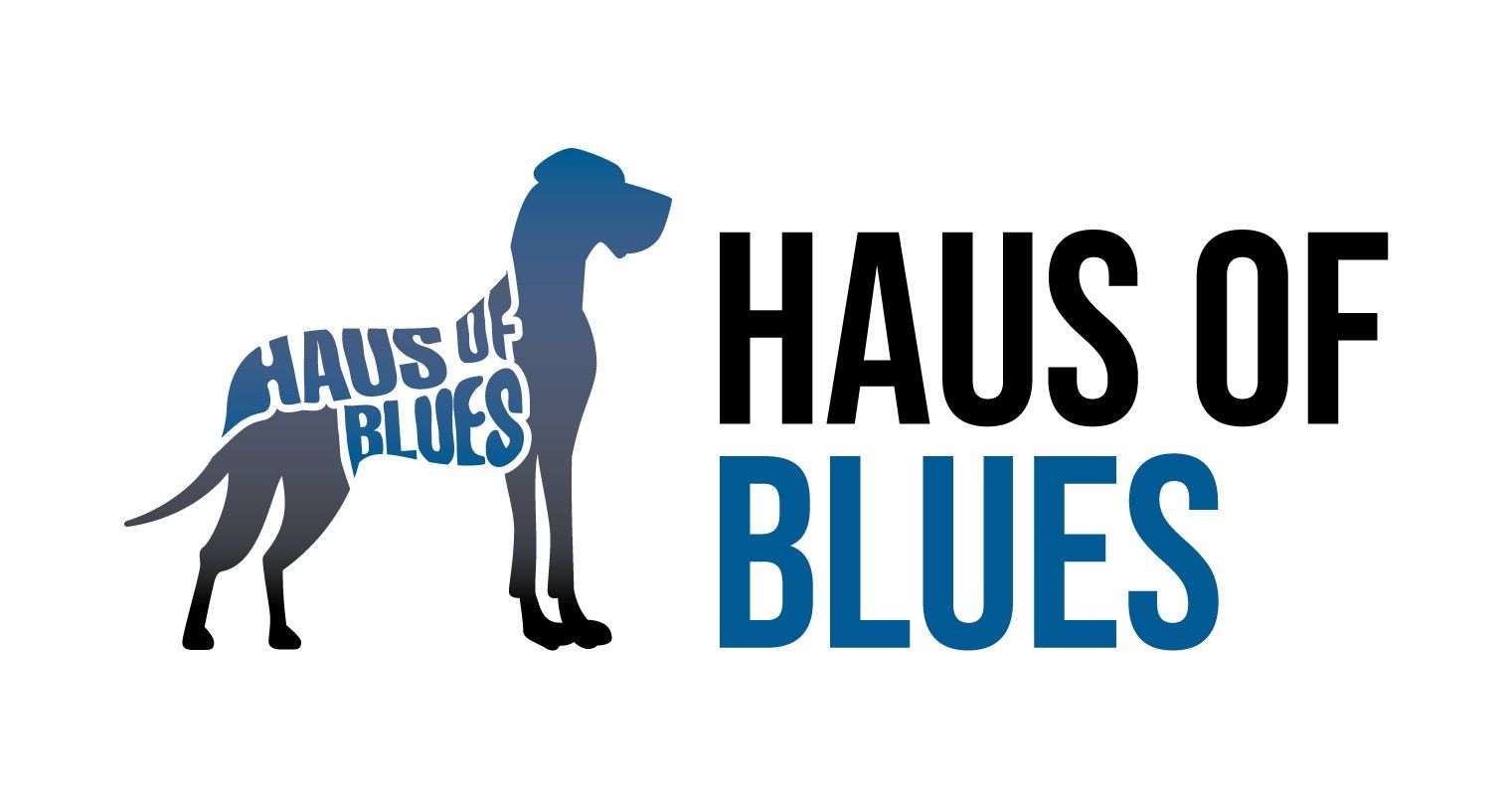How Breeding Works
Our dams, or female Great Danes, are in heat approximately every 3 to 6 months. For the first week, or so, of heat, the bitch will have a light bloody spotting. After that, she is considered fertile.
Once the female is fertile, she will be accepting of the the sire, or the male breeding dog. Essentially, for the first week, she will continue to tell the sire that “she has a headache.”
When the bitch is ready for the male, rather than telling him “no,” she will let him know she’s ok. Then they will mate.
Once the female is pregnant, the puppy gestation period is about 63 days. In the last week of her pregnancy, her abdomen will grow and become tight as a drum.
Puppies Are Born
On the first day of her labor, the mother will begin crying and licking her vaginal area. Once labor starts, it can be anywhere from a few hours, or a few days, before she begins delivering puppies.
Puppies are born in individual placenta sacs. When they emerge, the mid-wife (or mid-person), delivers the puppies.
In many cases, the sac around the puppy is already broken. Other times, it will need to be quickly removed. The umbilical cord which ties the puppy to the sac must be cut and clamped.
Each new puppy is weighed. The umbilical is cleaned and the placental sac is disposed.
Typically, the mother dog will want to eat the sac as a protective instinct. However, in many cases, this can also cause her some stomach issues, so we usually remove them.
Finally, each puppy is placed on their mother’s stomach to nurse. In many cases, the mid-person will help the puppies find a nipple and latch on to ensure they’re getting nutrition right away.
Failure to Thrive
In almost every litter of puppies, no matter how healthy they are, there is at least one baby who doesn’t make it. This is usually because they didn’t develop quite as much as they should have before birth. This is called “failure to thrive.”
Many times, people shopping for a new canine companion are concerned when one of the litter-mates passes. From the outside, it can look like there are genetic health issues in the line.
This couldn’t be further from the truth. Dog breeding has been in practice since the first cavemen domesticated wolves. In that time, every litter has several little lives vying for nutrition. It’s simply nature’s reality that a few don’t make it.
Why These Dates are So Important
The reasons for the various dates calculated above should be obvious. Just in case, we wanted to make sure everyone understands why we’re adamant that the puppy schedule be kept.
First of all, puppy buyers are anxious to see their new best friends. They want to see them born, watch them grow, and learn about their personalities. And, of course, they want to know when they can take them home.
Second, losing a beloved pet is very sad for owners. It’s much harder to deal with when a new puppy dies of a preventable disease.
The shot schedules are critical to keeping your new puppy safe and healthy in their earliest months of life. Diseases such as Parvo can quickly and easily take a young life.
How to Handle Your New Puppy
As breeders and puppy parents of five or more Danes, we at Haus of Blues know how to keep our animals happy and healthy. While dogs are very robust in many ways, it’s imperative in their first year of life to manage their hygiene.
Puppies without at least three sets of vaccinations should never be put on the ground in public. It’s fine to take them to the store, at least when they’re allowed to go in.
Most of the diseases that dogs are vaccinated for are transmitted through contact with infected animals, or from the ground. Parvo is notorious because it lives in canine feces. One person can step in a bit of dog pile and walk the infection everywhere they go.
Preventing your new puppy from getting sick is as simple as keeping them away from potential infected surfaces and animals. Keep them off the ground in public, and keep them away from unvaccinated animals until they’ve had three rounds of vaccinations.
